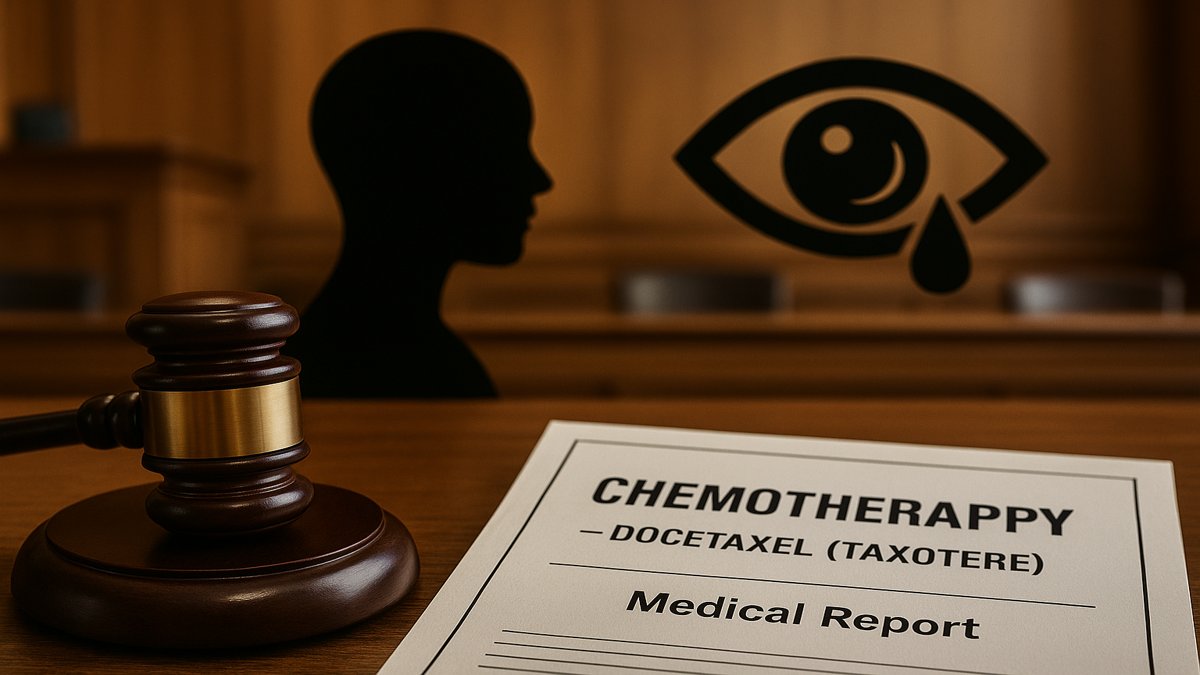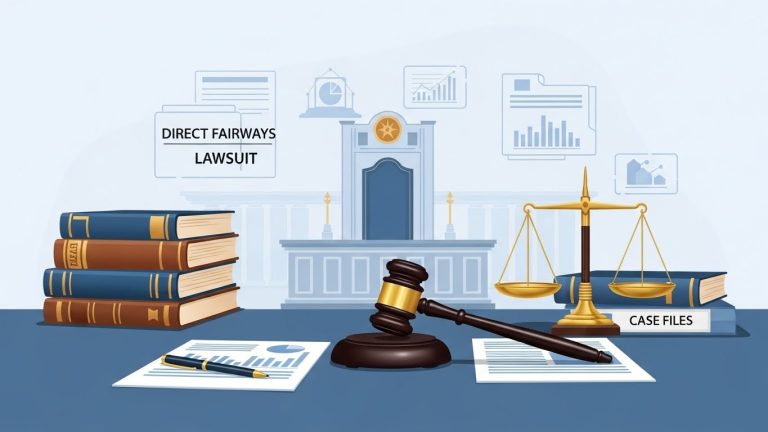Taxotere lawsuit provides detailed updates on claims involving lasting hair loss and serious vision damage. Many individuals treated with the chemotherapy drug report unexpected side effects. Hair never returned after treatment for some patients. Others experienced constant eye tearing and blocked tear ducts. The legal system grouped these cases into two main court proceedings. One focuses on hair damage, while the other examines eye-related injuries. Thousands of lawsuits remain active across both categories. Drug manufacturer responses and court motions continue to shape the timeline. Medical evidence and expert testimony play a key role in each outcome. No compensation agreements have been finalized as of now. People harmed by this drug still have legal options available. This guide shares the latest and valid information about Taxotere lawsuit activity, case progress, and next steps.
Understanding the Taxotere Lawsuit
Litigation splits into two MDLs. One handles permanent hair loss. The other handles vision and eye injuries. These tracks follow different injury types. They present unique legal themes.
Two major legal tracks
The first MDL, MDL 2740, focuses on permanent alopecia. The second, MDL 3023, covers eye injuries like canalicular stenosis and chronic tearing. Both MDLs sit in federal court in Louisiana before Judge Milazzo. Each track hosts distinct medical injury claims and timelines.
What plaintiffs claim
Claimants say Taxotere caused irreversible hair loss that never regrew. Vision‑injury plaintiffs report tear duct blockage, endless sparkling eyes, surgeries, even vision loss. They assert the drug maker knew of these dangers yet delayed warnings. In hair‑loss cases, plaintiffs allege negligence and misrepresentation. In vision cases, they add failure‑to‑warn claims and design defect. They argue earlier label warnings could have prevented harm.
Legal basis
Arguments center on legal causes. Plaintiffs sue under state laws for failure to warn. They claim Sanofi misled doctors and patients. They argue the drug offered no superior benefit compared to risks. Allegations include emotional distress and medical expenses. They seek compensation tailored to each injury’s impact.
Case Numbers and Filing Trends
This section tracks how filings changed over time. Growth patterns in each MDL show where litigation momentum lies. You see how case counts evolved through late 2024 into mid‑2025.
Latest hair loss numbers
Hair‑loss MDL peaked at around 9,474 active lawsuits by July 2024. Since then, numbers declined steadily. As of July 2025, about 5,442 hair‑loss cases remain pending. That marks a significant reduction in filings and consolidations.
Eye injury case counts
Eye‑injury MDL grew slowly. In December 2023 it held roughly 249 claims. By July 2024 it reached about 308. August moved it to 320. From February through April 2025 filings climbed from 316 to 342. By early July 2025, total reached about 343 cases. Growth slowed, but the MDL remains active.
Movement across months
Monthly shifts were modest. February 2025 added a single eye case over January. March saw a slight dip. April added around 27. June brought total to 344. Data reflects plateauing activity but steady base caseload. Hair‑loss shows steady decline, while eye‑injury shows slow build.
Legal Activity in 2025
Legal events shape case direction. Discovery, expert debates, motions, and trial planning matter. This part examines those developments.
Ongoing discovery and expert challenges
Attorneys exchange detailed medical records, treatment logs, expert reports. Defense frequently disputes plaintiffs’ experts. Courts impose deadlines for medical documentation and product identification. Those who fail to comply risk limited discovery or dismissal.
Summary judgment motion
In February 2025 the defense filed for summary judgment in vision MDL. They argued expert testimony lacks admissible proof. They claim Taxotere’s warning label already covered eye injury risk. Plaintiffs counter that label was inadequate and expert methods are valid.
Bellwether trials ahead
Courts set up bellwether pools to test cases as trial models. Although no trial dates exist yet in 2025, both sides prepare. Status conferences address schedule and readiness. Lawyers refine pool selection for future trials.
Injury Details
This section digs into what injuries plaintiffs report. It shows how the injuries differ and what evidence exists. You learn why plaintiffs say the harm is more severe than typical chemo side effects.
Permanent hair loss claims
Many recall full hair regrowth after chemotherapy. Taxotere users often did not experience regrowth. Patients lost scalp hair, eyebrows, eyelashes, body hair. That loss remained permanent years after stopping treatment. Labels added hair‑loss warnings in late 2015. Plaintiffs claim the manufacturer had risk data decades earlier but delayed disclosure until much later.
Eye injuries and vision problems
Claimants describe constant tearing (epiphora), blocked tear ducts, eye irritation, blurry vision. Many underwent surgical treatments like DCR. Some report lasting vision impact. Scientific literature noted risk of canalicular stenosis as early as 2001. Label warnings followed only in 2022. Plaintiffs say delay deprived patients of informed choice.
Evidence Challenges
Courts evaluate case viability through strength of evidence and expert proof. This section outlines key litigation hurdles.
Expert testimony disputes
Sanofi contests many experts. It claims methodology lacks scientific basis. Plaintiffs insist jury should weigh adequacy of expert proof and warnings. Courts review reliability and admissibility under Daubert.
Labels and preemption issues
Defendant argues federal drug laws shield them from state failure‑to‑warn claims if label complied with FDA rules. Plaintiffs point to new research and risk data that should have triggered earlier label changes. They claim label inadequacy remains a factual issue.
Discovery deadlines
Courts set deadlines for plaintiff fact sheets and product identification. Those who fail to comply may lose discovery rights or face case dismissal. These orders weed out incomplete or weak claims early.
Financial Outlook
How much compensation could claimants receive? Settlement potential and payout ranges vary. This section covers those estimates.
Settlements so far
Neither hair‑loss nor eye‑injury MDL has yielded settlement payments as of July 2025. No global resolution exists yet. Every case remains active and unresolved.
Estimated payouts
Law firms estimate awards between $20,000 and several hundred thousand dollars per case. Higher payouts align with documented surgeries, severe permanent harm, income loss, and strong expert evidence.
Case uniqueness matters
Each plaintiff’s case stands alone. Compensation depends on injury type, medical treatment, economic harm, emotional impact. Multi‑plaintiff consolidation affects logistics but not individual evaluation.
Taxotere Lawsuit Metrics As of July 2025
| MDL | Focus Area | Pending Cases | Recent Trend | Settlement Status |
|---|---|---|---|---|
| 2740 | Permanent hair loss | ~5,442 | Declining filings | None to date |
| 3023 | Eye injury and vision | ~343 | Slow growth | None to date |
What to Do If You Are Affected
This section guides readers on actionable steps. You get practical advice on preparing for legal options.
Track MDL updates
You can monitor court orders, bellwether selection, expert rulings, and discovery deadlines. Stay informed about summary judgment and trial scheduling.
Collect your records
You should gather treatment logs, medical bills, diagnosis reports, photos, expert opinions. Maintain organized documentation showing hair or vision harm.
Consult a lawyer
Seek a free consultation from a mass tort lawyer with MDL experience. They work on contingency, so you pay only if you recover money. They guide document review and case filing.
Act on timeline
Each state has time limits to sue. Some cases faced dismissal for missing required fact sheets or product ID information. Don’t delay gathering information or seeking legal help.
Engaging the Reader
Do you face persistent hair loss after Taxotere treatment? Does your eye water constantly without relief? You deserve clarity and you may qualify for a claim. You can begin by gathering documents. Moreover, you can reach out to counsel now. Does knowing case numbers help you feel ready? Will understanding MDL status help guide your next move?
Conclusion
Thousands of people continue to seek answers through legal action related to Taxotere Lawsuit. Claims focus on permanent hair loss and long-term eye complications. Each case moves forward based on medical records, expert input, and court procedures. Some patients report ongoing health issues that impact daily life. While no settlement has been reached, legal teams remain active. Details around injury type and treatment history may affect potential compensation. Those affected should gather evidence and consult legal professionals. Early action can help protect eligibility. Understanding how these lawsuits evolve gives clarity to those impacted. Accurate information supports better decisions. Following case developments may help you prepare for what comes next. Staying informed means staying ready.




